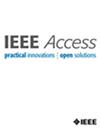智慧旅游目的地的多维准备度评估:自然语言处理和主题分析方法
IF 3.4
3区 计算机科学
Q2 COMPUTER SCIENCE, INFORMATION SYSTEMS
引用次数: 0
摘要
在技术进步的推动下,旅游业的迅速扩张催生了智能旅游,改善了游客体验,简化了目的地管理。在印度尼西亚等欠发达国家,目的地往往没有为使用智能技术做好充分准备,导致效率低下和项目失败。现有的旅游发展评估模型通常侧重于特定区域或孤立的维度,缺乏对治理、社会经济条件和信息技术(IT)意识的综合评估。本研究通过引入基于技术-组织-环境(TOE)范式的多维框架来评估智能旅游准备情况,从而解决了这一差距。本研究首先使用系统评价和荟萃分析的首选报告项目(PRISMA)方法对现有文献进行了彻底的回顾,以找到准备的关键因素,并结合了定性和定量研究方法。我们使用自然语言处理(NLP)对现有评估模型的维度进行了定量检查。在定性阶段,进行了两个验证过程。第一个过程涉及与利益相关者的专家访谈,以验证在前一步中确定的维度。在第二个验证过程中,我们通过将建议的维度与来自知名框架(如COBIT和ITIL 4)的IT治理组件相匹配来简化信息。这种映射确保建议的维度与IT治理组件保持一致,支持智能旅游目的地的智能技术有效管理。该研究确定了七个关键的准备程度维度,作为一项重要发现:治理、可持续性、在线旅游服务、智能技术、可及性、创新和社会经济条件。调查结果有助于建立一个全面的准备度评估框架,为政策制定者和旅游业利益相关者提供可操作的见解,为战略规划和政策制定提供信息。这一综合模式有助于成功实施智慧旅游倡议,解决发展中国家面临的独特挑战,促进长期可持续性。本文章由计算机程序翻译,如有差异,请以英文原文为准。
Multidimensional Readiness Evaluation of Smart Tourism Destinations: A Natural Language Processing and Thematic Analysis Approach
The rapid expansion of the tourism sector, driven by technological progress, has led to smart tourism, improving visitor experiences and streamlining destination administration. In underdeveloped nations, such as Indonesia, destinations often are not adequately prepared to use smart technology, resulting in inefficiencies and unsuccessful projects. Existing models for evaluating tourism progress typically concentrate on specific regions or isolated dimensions, lacking a comprehensive assessment of governance, socio-economic conditions, and information technology (IT) awareness. This research addresses this gap by introducing a multidimensional framework for evaluating smart tourism readiness based on the Technology-Organization-Environment (TOE) paradigm. The study starts with a thorough review of existing literature using the Preferred Reporting Items for Systematic Review and Meta-Analysis (PRISMA) method to find key factors for readiness, and it uses a combination of both qualitative and quantitative research methods. We conducted a quantitative examination using natural language processing (NLP) to cluster the dimensions of the existing evaluation models. In the qualitative phase, two validation processes were conducted. The first process involved expert interviews with stakeholders to validate the dimensions identified in the previous step. In the second validation process, we simplified the information by matching the proposed dimensions with IT governance components from well-known frameworks like COBIT and ITIL 4. This mapping ensures the proposed dimensions are aligned with IT governance components, supporting the effective management of smart technology in smart tourism destinations. The study identifies seven critical readiness dimensions as a key finding: governance, sustainability, online tourism services, smart technology, accessibility, innovation, and socioeconomic conditions. The findings contribute to a holistic readiness evaluation framework, offering actionable insights for policymakers and tourism stakeholders to inform strategic planning and policy development. This comprehensive model supports the successful implementation of smart tourism initiatives, addressing the unique challenges of developing countries and fostering long-term sustainability.
求助全文
通过发布文献求助,成功后即可免费获取论文全文。
去求助
来源期刊

IEEE Access
COMPUTER SCIENCE, INFORMATION SYSTEMSENGIN-ENGINEERING, ELECTRICAL & ELECTRONIC
CiteScore
9.80
自引率
7.70%
发文量
6673
审稿时长
6 weeks
期刊介绍:
IEEE Access® is a multidisciplinary, open access (OA), applications-oriented, all-electronic archival journal that continuously presents the results of original research or development across all of IEEE''s fields of interest.
IEEE Access will publish articles that are of high interest to readers, original, technically correct, and clearly presented. Supported by author publication charges (APC), its hallmarks are a rapid peer review and publication process with open access to all readers. Unlike IEEE''s traditional Transactions or Journals, reviews are "binary", in that reviewers will either Accept or Reject an article in the form it is submitted in order to achieve rapid turnaround. Especially encouraged are submissions on:
Multidisciplinary topics, or applications-oriented articles and negative results that do not fit within the scope of IEEE''s traditional journals.
Practical articles discussing new experiments or measurement techniques, interesting solutions to engineering.
Development of new or improved fabrication or manufacturing techniques.
Reviews or survey articles of new or evolving fields oriented to assist others in understanding the new area.
 求助内容:
求助内容: 应助结果提醒方式:
应助结果提醒方式:


